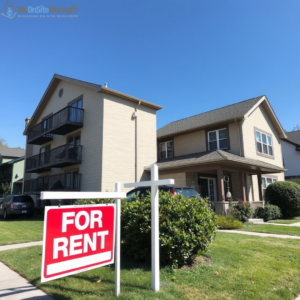In recent years, the disparity between minimum wage earnings and housing costs has widened significantly, leading to a nationwide affordability crisis. Minimum-wage workers are finding it increasingly difficult to secure affordable housing, particularly one-bedroom apartments, across the United States.
The Stark Reality of Rental Costs
According to a report by the National Low Income Housing Coalition (NLIHC), the national average fair market rent for a one-bedroom home is $1,390 per month, and $1,670 for a two-bedroom home. These figures are far from affordable for a family in poverty or a person relying on federal assistance. (nlihc.org)
This situation is exacerbated in urban areas. For example, in Richmond, Virginia, a study by Clever Real Estate determined that residents need to earn approximately $30 an hour to afford a typically priced one-bedroom apartment, which equates to an annual income of over $61,000. (axios.com)
In places like San Francisco and New York City, where rental costs are notoriously high, the affordability gap is even more severe. A minimum-wage worker in San Francisco, even with the city’s higher local minimum wage of $18.07 per hour, would have to work over 100 hours per week just to afford a modest one-bedroom apartment. The problem is not exclusive to coastal cities—midwestern cities like Chicago and Minneapolis have also seen rising rental prices that outpace wage growth.
The Inadequacy of the Federal Minimum Wage
The federal minimum wage has remained at $7.25 per hour since 2009. A full-time worker earning this wage brings home roughly $1,257 per month before taxes. To adhere to the 30% income affordability threshold, such a worker would need to find housing costing no more than $377 per month—a figure that is virtually unattainable in today’s rental market. (oaoa.com)
Even in cities with higher local minimum wages, the gap between earnings and housing costs persists. For instance, in Buffalo, New York, where the minimum wage is $15 per hour, the average one-bedroom apartment rent consumes 39% of a minimum-wage earner’s income, exceeding the recommended affordability threshold. (investopedia.com)
The Human Impact of Housing Insecurity
The inability to afford housing has significant consequences for individuals and families. Many minimum-wage workers are forced to live in overcrowded or substandard housing conditions, move to distant suburbs with long and costly commutes, or even experience homelessness.
Housing instability also has long-term social and economic effects. Children in unstable housing situations often struggle in school due to frequent moves, stress, and lack of a consistent environment for studying. Adults facing housing insecurity may experience higher levels of stress, mental health issues, and difficulty maintaining stable employment.
Furthermore, with such a high percentage of income going toward rent, many workers are left with little to cover other essential expenses such as food, healthcare, transportation, and savings for emergencies. This cycle of financial strain makes it nearly impossible for minimum-wage workers to improve their economic standing or plan for the future.
Broader Implications and the Need for Action
The inability of minimum-wage workers to afford basic housing has far-reaching consequences, including increased homelessness, financial instability, and adverse health outcomes. Addressing this issue requires a multifaceted approach:
- Raising Wages: Increasing the federal minimum wage to reflect the current cost of living can help bridge the gap between earnings and housing costs. Many experts advocate for a $15-$20 per hour minimum wage to keep up with inflation and rising housing expenses.
- Expanding Affordable Housing: Investments in affordable housing initiatives are crucial to providing options within the financial reach of low-income earners. Federal and state programs that subsidize housing costs can alleviate some of the financial burdens on minimum-wage workers.
- Implementing Rent Controls: Policies that limit excessive rent increases can protect vulnerable populations from being priced out of their homes. Some cities, like New York and San Francisco, have implemented rent control policies, though these measures are often controversial and debated.
- Strengthening Tenant Protections: Laws that prevent unfair evictions, rental discrimination, and exploitative leasing practices can help safeguard renters from abrupt displacement.
- Encouraging Employer Solutions: Some companies are stepping in by offering housing stipends or employer-sponsored housing for low-wage employees, a trend that could be expanded across industries.
Without concerted efforts to address these challenges, the housing affordability crisis for minimum-wage earners is poised to worsen, further entrenching economic disparities and social inequities.
Source: Minimum-Wage Earners Can Not Afford to Rent a One-Bedroom Apartment Across the Country

